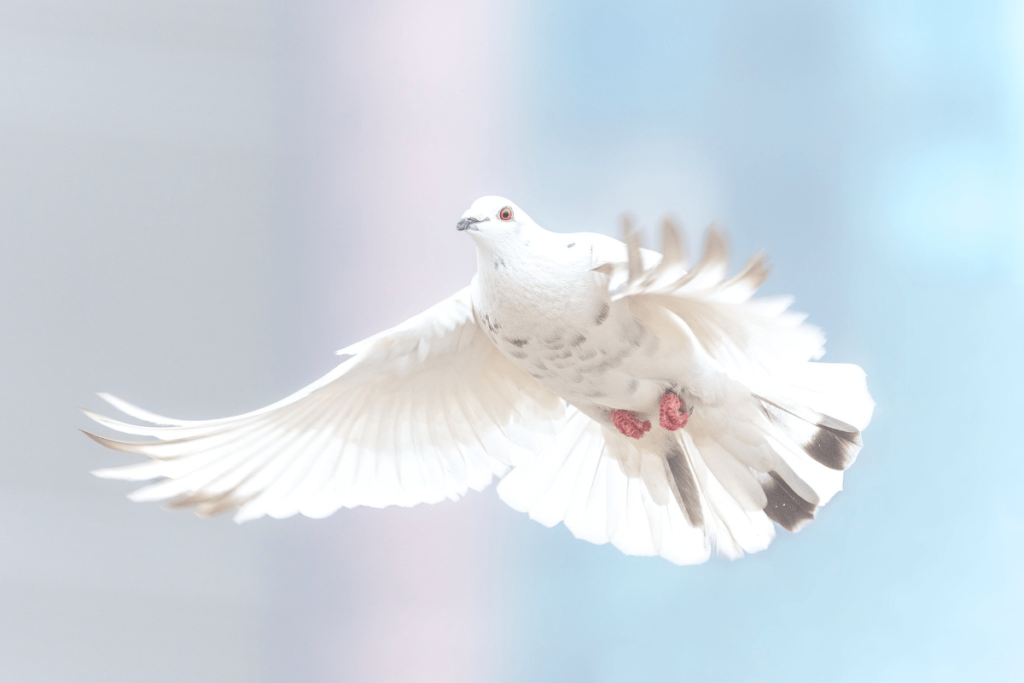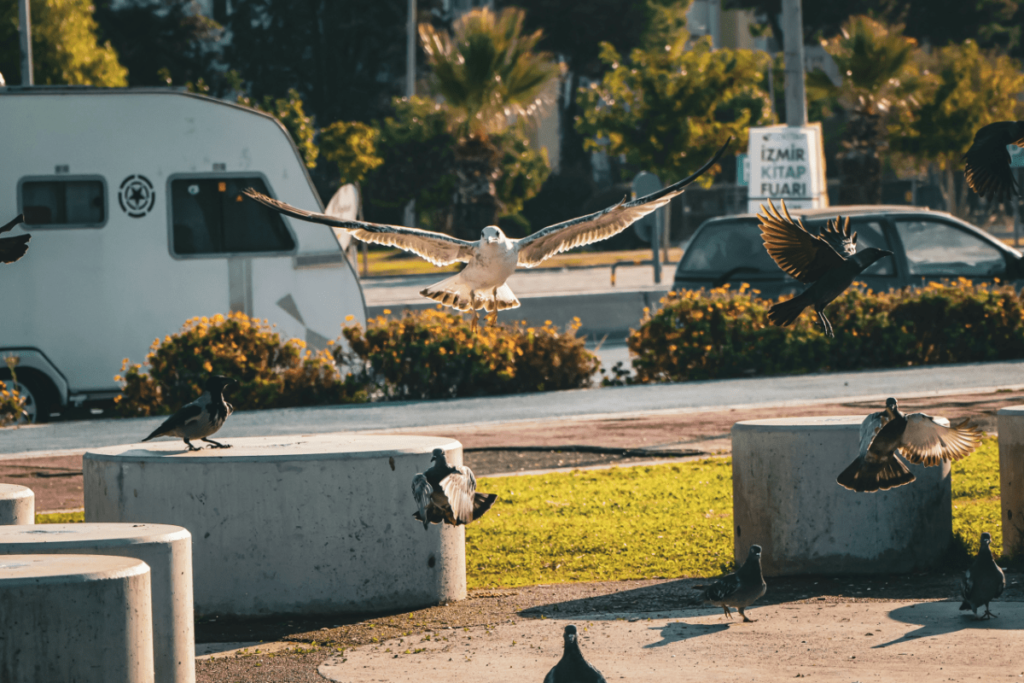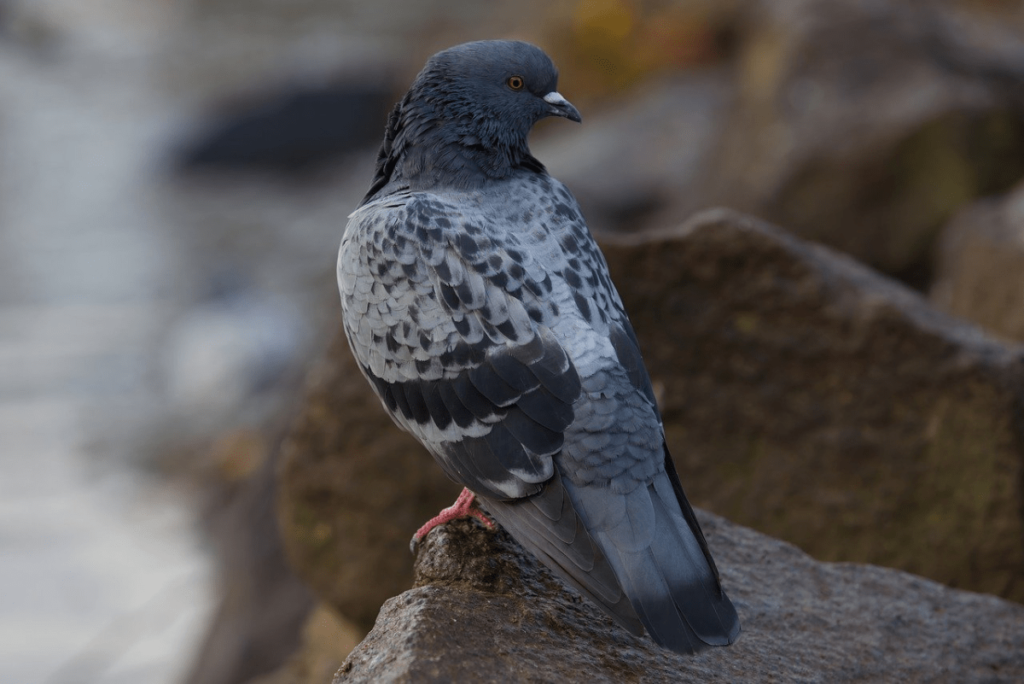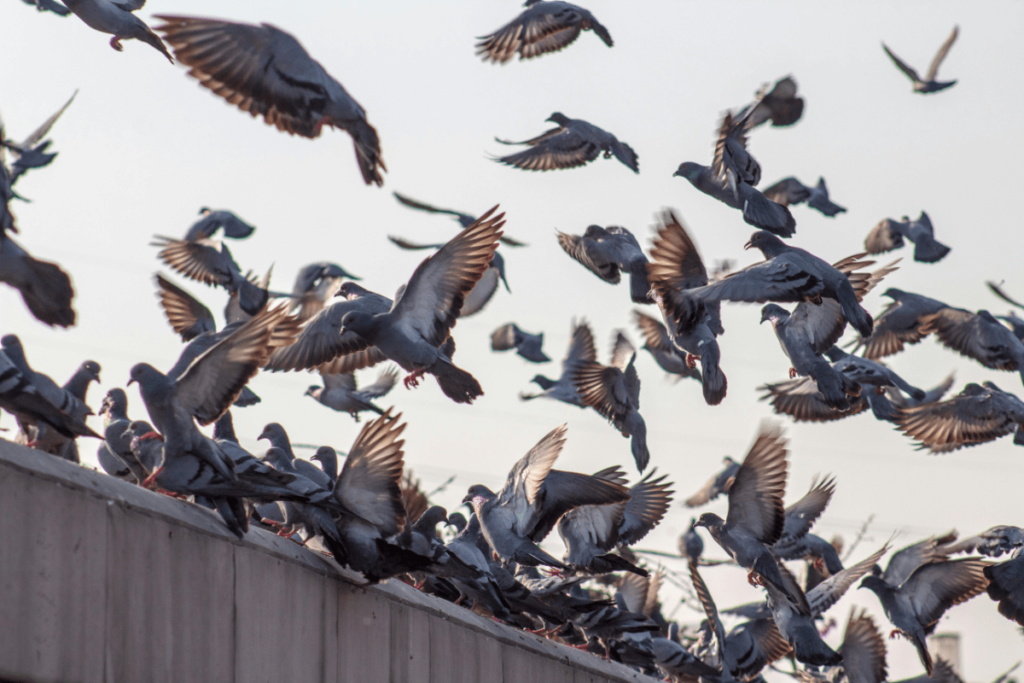The fascinating question of “how do homing pigeons know where to go” has intrigued both scientists and bird enthusiasts for centuries. Homing pigeons, or carrier pigeons, are among the most remarkable avian species known for their exceptional navigational abilities.
Their unique skill to return to their home lofts from great distances has fascinated scientists, historians, and enthusiasts alike. This article delves deeply into the world of homing pigeons, exploring their navigation mechanisms, historical significance, modern uses, and the challenges they face today.
Understanding Homing Pigeons
What is a Homing Pigeon?
Homing pigeons are a domesticated variety of the rock pigeon (Columba livia). Unlike their wild counterparts, homing pigeons have been selectively bred for their unique homing ability, which allows them to return to their home lofts from distant locations. This trait has made them invaluable in various human endeavors, from wartime communication to competitive racing.

Animal Information (Pigeon)
| Common Name | Pigeon |
| Scientific Name | Columba livia |
| Family Name | Columbidae |
| Type | Bird |
| Size (Head & Body Length) | 32-37 cm (12.6-14.6 in) |
| Weight | 238-380 g (8.4-13.4 oz) |
| Size Relative to a 6-Ft Human | Comparable to a medium-sized bird |
| Diet | Grains, seeds, fruits, small insects |
| Average Lifespan in the Wild | 3-5 years |
| Habitat | Urban areas, cliffs, farms, and woodlands |
| Group Name | Flock |
| Found In | Worldwide, particularly in cities |
| Conservation Status | Least Concern |
Physical Characteristics
Homing pigeons possess several physical traits that aid in their navigation and survival:
- Size and Build: Generally, homing pigeons are medium-sized birds with a robust build. They have strong wings and a relatively large keel (breastbone) that supports powerful flight muscles.
- Feathers and Plumage: Their plumage can vary in color, including shades of gray, brown, and white. The feathers are designed to be aerodynamic, reducing drag and enhancing their flight efficiency.
- Eyesight and Hearing: Pigeons have excellent vision, particularly in low-light conditions. Their hearing is also highly developed, allowing them to detect subtle sounds that can aid in navigation.
Although pigeons didn’t make it onto our list of the Top 11 Smartest Animals in the World, they are still remarkably intelligent, especially when it comes to their memory.
How Do Homing Pigeons Work (Navigate)?
Homing pigeons use a combination of environmental cues to navigate back to their home lofts:
- Magnetic Fields: Pigeons have specialized cells in their beaks that contain magnetite, a magnetic mineral. This helps them sense the Earth’s magnetic field and use it for orientation. Studies have shown that pigeons can detect changes in the Earth’s magnetic field and use this information to navigate over long distances.
- Landmarks: Visual landmarks play a crucial role in pigeon navigation. Pigeons can recognize and remember specific landmarks such as mountains, rivers, and buildings. They use these landmarks to create a mental map of their environment, which helps them find their way back home.
- Sun Positioning: Pigeons also use the position of the sun as a navigational aid. They have an internal clock that helps them compensate for the sun’s movement throughout the day, allowing them to maintain their course even when the sun is obscured by clouds.
- Olfactory Cues: Recent research suggests that pigeons have a keen sense of smell, which they use to identify and remember specific odors associated with their home environment.

How to Train Homing Pigeons?
Training homing pigeons requires a structured approach to develop their innate homing abilities:
- Gradual Distance Increases: Training typically begins with short flights close to home. As the pigeons become more proficient, the distance is gradually increased. This helps build their confidence and reinforces their homing instinct.
- Consistency and Routine: Regular training sessions are essential for reinforcing the pigeons’ homing abilities. Consistent routines help pigeons become familiar with their home loft and the surrounding environment.
- Positive Reinforcement: Pigeons are motivated by rewards, such as food and water. After each successful return, pigeons are given their rewards, which strengthens their association with the home loft and encourages them to return reliably.
History of Homing Pigeons:
Homing pigeons have played a significant role in human history, particularly in communication:
- Wartime Communication: During World War I and II, homing pigeons were used extensively for sending messages across enemy lines. Their ability to deliver messages quickly and reliably made them invaluable for military communication. Notable pigeons like Cher Ami and The Messenger are celebrated for their heroic contributions.
- Ancient Civilizations: Historical records indicate that homing pigeons were used in ancient Egypt, Greece, and Rome for various purposes, including message delivery and participation in races. They were highly valued for their reliability and speed.
Notable Stories of Homing Pigeons
Homing pigeons have been central to many remarkable stories throughout history. Their exceptional abilities have led them to perform incredible feats, save lives, and leave lasting legacies. Here are some detailed accounts of famous homing pigeons and their heroic actions:
Cher Ami: The Heroic Pigeon of World War I
Background: Cher Ami was a homing pigeon serving with the U.S. Army’s 77th Division during World War I. The pigeon was part of the American forces’ communication system, which was crucial for relaying messages across enemy lines.
The Mission: In October 1918, during the Meuse-Argonne Offensive, the 77th Division found itself in a dire situation. The unit was trapped behind enemy lines with heavy casualties and facing imminent danger. Communication with headquarters was critical to request reinforcements and medical aid.
The Heroic Flight: Cher Ami was entrusted with a crucial message detailing the unit’s location and their desperate need for assistance. Despite the intense enemy fire and challenging weather conditions, Cher Ami took flight. During the mission, the pigeon was injured by shrapnel, losing one leg and suffering from a severe chest wound. Nevertheless, Cher Ami persevered and completed the flight.
Outcome: Cher Ami successfully delivered the message, which led to the rescue of the trapped soldiers. The pigeon’s bravery saved the lives of approximately 200 men. Cher Ami was awarded the Croix de Guerre for heroism, and the pigeon’s story became legendary, symbolizing courage and determination. Cher Ami’s preserved body is now displayed at the Smithsonian Institution.
The Messenger: A Pigeon Who Saved a City
Background: During World War II, the British Royal Air Force (RAF) utilized homing pigeons for communication, especially in situations where traditional methods were compromised. One notable pigeon, named The Messenger, played a crucial role in saving lives during an air raid.
The Mission: In 1943, during a German bombing raid over London, a pigeon known as The Messenger was stationed with a rescue team. The team was working to locate and assist survivors trapped in the rubble of bombed buildings. Communication was crucial, but the conventional methods were hindered by the chaos of the raid.
The Heroic Flight: The Messenger was used to carry messages between the rescue team and headquarters. The pigeon flew through the dangerous, bombed-out areas, delivering urgent updates about the location of survivors and the conditions of the rescue efforts. Despite the perilous conditions, The Messenger completed several flights, ensuring that vital information reached the rescue teams.
Outcome: The information provided by The Messenger enabled the rescue teams to coordinate their efforts more effectively, leading to the successful rescue of many individuals trapped under the debris. The pigeon’s bravery and reliability were credited with saving countless lives during the raid.

Nina: The Pigeon That Changed History
Background: Nina was a homing pigeon used by the French Resistance during World War II. The Resistance relied on pigeons to transmit information between various cells operating covertly against the occupying German forces.
The Mission: In 1944, Nina was tasked with delivering critical intelligence about German troop movements and planned operations. The messages carried by Nina contained vital information that could impact the Allied invasion plans and the overall war effort.
The Heroic Flight: Nina faced numerous challenges during her missions, including evading enemy detection and navigating through hostile territories. Despite these obstacles, Nina successfully transported several messages, each time braving the dangers of enemy patrols and harsh weather conditions.
Outcome: The intelligence delivered by Nina contributed to the success of several key military operations, including the D-Day landings. The pigeon’s efforts were instrumental in coordinating Allied strategies and ensuring the success of the invasion. Nina’s contributions were celebrated, and the pigeon’s story highlighted the invaluable role of homing pigeons in wartime communication.
G.I. Joe: The Lifesaving Pigeon of World War II
Background: G.I. Joe was a homing pigeon serving with the U.S. Army during World War II. The pigeon was stationed with the 194th Tank Battalion in Italy, where it played a critical role in a pivotal military operation.
The Mission: In 1943, the 194th Tank Battalion was engaged in an operation to liberate a town in Italy. The battalion faced unexpected enemy resistance, and the situation became dire. G.I. Joe was assigned to carry a message requesting urgent support to prevent the enemy from capturing the town.
The Heroic Flight: G.I. Joe took flight with the crucial message, navigating through enemy fire and difficult terrain. The pigeon managed to avoid interception and successfully delivered the message, which contained details about the battalion’s situation and the need for immediate assistance.
Outcome: The message was received just in time, prompting the arrival of reinforcements that helped the battalion fend off the enemy and secure the town. G.I. Joe’s swift and reliable delivery of the message was credited with saving the town from capture and ensuring the safety of many soldiers. The pigeon was awarded the Dickin Medal for bravery, one of the highest honors for animal acts of valor.
Winkle: The Feathered Hero of the Korean War
Background: Winkle was a homing pigeon utilized by the U.S. Army during the Korean War. The pigeon was part of a special unit responsible for delivering messages across difficult and often dangerous terrain.
The Mission: In 1951, during a critical phase of the Korean War, Winkle was deployed to carry messages between forward units and command centers. The terrain was rugged, and the weather conditions were harsh, making the missions particularly challenging.
The Heroic Flight: Despite the severe conditions, Winkle made several successful flights, delivering important updates about enemy movements and troop deployments. The pigeon’s reliability was vital in maintaining communication between isolated units and ensuring coordinated military operations.
- Outcome: Winkle’s efforts were instrumental in keeping the forward units informed and enabling them to respond effectively to changing conditions. The pigeon’s bravery and dedication earned it recognition for its contributions to the war effort. Winkle’s story highlights the continued importance of homing pigeons in modern warfare.

Homing Pigeons in Modern Times
Current Uses
In contemporary times, homing pigeons continue to be valued for various purposes:
- Racing Pigeons: Competitive pigeon racing is a popular sport where pigeons are trained to race over long distances. The performance of racing pigeons is evaluated based on speed and accuracy. Races can cover distances of up to 600 miles, with pigeons competing for prizes and recognition.
- Scientific Research: Researchers study homing pigeons to gain insights into their navigational abilities, which have applications in understanding animal behavior, cognition, and technology. For example, studies on pigeon navigation have contributed to advancements in GPS technology.
Conservation and Breeding
Efforts to conserve and breed homing pigeons focus on maintaining their genetic diversity and ensuring their well-being:
- Breeding Practices: Breeders select pigeons with strong homing abilities and healthy genetics to continue the tradition of pigeon racing and research. Selective breeding helps maintain the pigeons’ desirable traits and improves their performance.
- Conservation Efforts: Conservation measures include protecting natural and urban habitats, monitoring pigeon health, and educating the public about the importance of homing pigeons. These efforts aim to ensure the continued existence and well-being of homing pigeons.
Challenges Faced by Carrier Pigeons (Homing Pigeons)
Homing pigeons face several challenges in the modern world:
- Urbanization: Rapid urban development can disrupt pigeon habitats and create obstacles for their navigation. Buildings, roads, and other structures can interfere with their ability to recognize landmarks and find their way home.
- Predation: Pigeons are vulnerable to predators such as hawks, cats, and other animals that can threaten their survival. Predation can impact pigeon populations and affect their ability to perform in races or complete their homing tasks.
- Disease: Pigeons are susceptible to various diseases, including pigeon paramyxovirus and avian influenza. Disease outbreaks can impact pigeon health and reduce their overall population.
Also, check out The Secrets Behind Eagle’s Hunting Techniques

Conservation Efforts
Conservation efforts for homing pigeons include:
- Habitat Preservation: Protecting natural and urban habitats is essential for providing safe environments for pigeons. Ensuring that pigeons have access to suitable nesting sites and food sources is crucial for their survival.
- Health Monitoring: Regular veterinary check-ups and vaccinations help prevent disease outbreaks and maintain pigeon health. Monitoring programs track pigeon populations and address health issues promptly.
- Public Awareness: Educating the public about the importance of homing pigeons and the need for conservation efforts helps raise awareness and support for these remarkable birds.
Fun Facts About Homing Pigeons
1. Remarkable Navigation:
Homing pigeons can find their way home from distances up to 1,000 miles. They use magnetic fields, visual landmarks, and even the Earth’s scent to navigate.
2. Historic Messengers:
During World War I, pigeons like Cher Ami delivered crucial messages despite being injured, saving many lives and proving their importance in communication.
3. Unique Colors:
Pigeons come in a range of colors and patterns, including white, black, and iridescent shades, thanks to selective breeding and genetic variation.
4. Long Lifespan:
Wild pigeons live up to 15 years, and those in captivity can live even longer due to specialized care.
5. Impressive Speed:
Homing pigeons can fly at speeds over 60 miles per hour, making them efficient messengers and racers.
6. Natural Instincts:
Even as young pigeons, they have an innate homing instinct, allowing them to navigate back to their home lofts.
7. Strong Bonds:
Pigeons often mate for life and have strong social bonds, which help them thrive in their environments.
Check out the Top 10 Animals That Mate for Life
8. Ancient Roots:
Domesticated pigeons descended from wild rock pigeons native to Europe, North Africa, and Asia, with domestication beginning thousands of years ago.
9. Adaptable Nature:
They can thrive in diverse habitats, from rural areas to cities, showcasing their adaptability.
10. Scientific Contributions:
Studies on pigeon navigation have advanced our understanding of animal behavior and cognitive processes.
11. Symbolic Meaning:
Pigeons symbolize peace and communication due to their historical role in delivering messages during wartime.
12. Cultural Presence:
They appear in various cultures and traditions worldwide, reflecting their significance and admiration.
13. Cognitive Skills:
Pigeons can recognize human faces, differentiate shapes, and remember routes, highlighting their cognitive abilities.
14. World Records:
Some pigeons have set records by flying over 1,000 miles in a single flight, demonstrating their endurance and speed.
15. Early Communication:
Before modern technology, pigeons were used for news delivery and emergencies, proving their value in historical communication.

FAQs About Carrier Pigeons
1. What do homing pigeons eat?
Homing pigeons primarily eat grains and seeds such as corn, wheat, and millet. In captivity, their diet is often supplemented with vitamins and minerals to ensure they stay healthy, especially when they are used for racing or long-distance flights. Some pigeon fanciers also provide their birds with legumes, peas, and small amounts of fruit and vegetables.
2. Do pigeons remember faces?
Yes, pigeons have remarkable memory and cognitive abilities, including the ability to recognize and remember human faces. Studies have shown that pigeons can distinguish between different people and even remember them for an extended period. This ability helps them navigate urban environments and interact with humans, especially in areas where they are regularly fed.
3. Are homing pigeons extinct?
No, homing pigeons are not extinct. They are still widely bred and used today, especially in pigeon racing and messaging. However, the wild populations of their ancestor, the rock dove, are declining in some areas due to habitat loss and other factors. Homing pigeons themselves, being a domesticated breed, continue to thrive under human care.
4. How do homing pigeons find their way home?
Homing pigeons navigate using a combination of visual landmarks, the Earth’s magnetic field, the position of the sun, and even their sense of smell. Their ability to find their way back over long distances is a result of this sophisticated multi-sensory navigation system.
5. How far can homing pigeons fly?
Homing pigeons are capable of flying distances up to 600-700 miles (965-1,126 kilometers) in a single journey. Some exceptional pigeons have been known to cover even greater distances, making them one of the most reliable bird species for long-distance navigation.
Conclusion
Homing pigeons are truly extraordinary creatures with a rich history and continued relevance in modern times. Their remarkable navigational skills, historical significance, and contributions to various fields highlight their importance as nature’s navigators. Whether in wartime communication, competitive racing, or scientific research, homing pigeons continue to inspire and fascinate people around the world.
Share your thoughts on homing pigeons and learn more about how you can get involved in pigeon racing or conservation efforts. Explore the world of homing pigeons and appreciate their incredible abilities and contributions!




